They say a picture is worth a thousand words, so i will let the pictures do the talking.
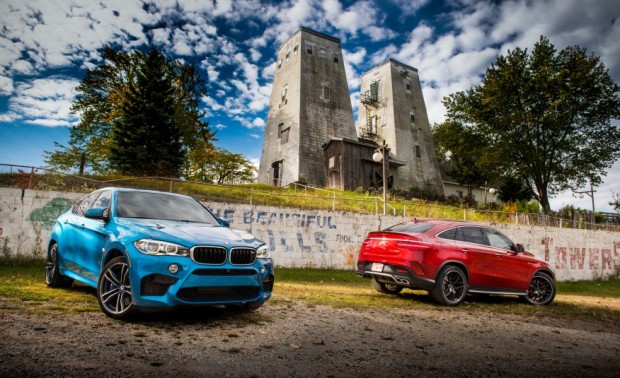






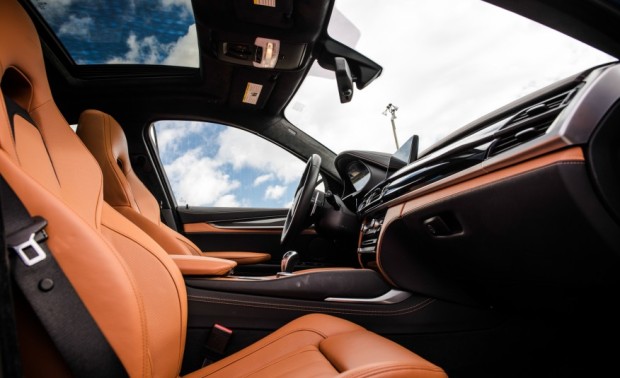





Source:http://www.caranddriver.com/
They say a picture is worth a thousand words, so i will let the pictures do the talking.













Source:http://www.caranddriver.com/
 The side-view of the 2017 Honda CR-V
The side-view of the 2017 Honda CR-V
Yup!, the all new 2017 Honda CR-V is the best compact SUV in the whole world–and that’s not a subjective statement.But before you begin shouting obscenities at the editor, please take a few minutes and digest the views of some of the experts in automobile journalism and be convinced by the overwhelming evidence.
Car and Driver:
“Versatility, competency, and reliability are the tenets on which the CR-V hangs its hat, hence its 2017 10Best award. Supportive seats and a firm but supple ride make it easy to live with. The interior is quiet, handsome, and roomy. The base engine is a 184-hp 2.4-liter four, while a 190-hp 1.5-liter turbo four is optional. A CVT (one of the best available) and front-wheel drive are standard; all-wheel drive is optional”.
 The rear view of the 2017 Honda CR-V
The rear view of the 2017 Honda CR-V
Edmunds:
“Are you looking for a crossover SUV that’s coolly competent across the board? The redesigned 2017 Honda CR-V will certainly fit the bill. It gets sharp new styling, even more feature content and an excellent optional turbocharged engine. It’s a great choice for an all-around crossover SUV”.
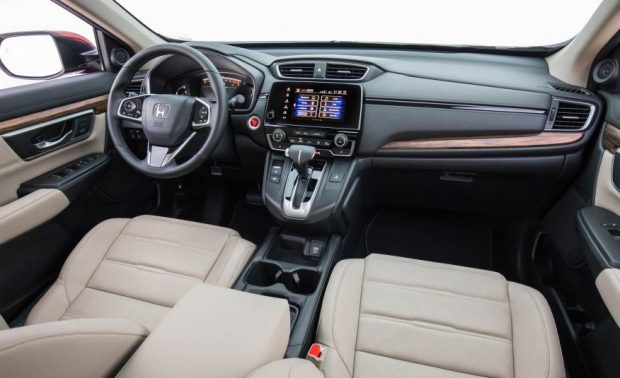 The interior and instrument cluster of the 2017 Honda CR-V
The interior and instrument cluster of the 2017 Honda CR-V
Autoblog:
“The Honda CR-V was the best-selling vehicle in the compact CUV segment last year, and it has been redesigned for 2017. Major updates mean more space inside for passengers and cargo, a bit more power and efficiency from a new 1.5-liter turbocharged four-cylinder engine, and a quieter, more comfortable driving experience. The previous CR-V was already one of the best vehicles in its class, and the fully redesigned 2017 CR-V remains the best bet for your buck”.
 The view from the spacious back seats of the 2017 Honda CR-V
The view from the spacious back seats of the 2017 Honda CR-V
Consumer Report:
“In an attempt to keep its sales crown, the 2017 Honda CR-V adds convenience, technology, and refinement; expands advanced safety feature offerings; and, for the first time, offers an up-level turbocharged engine.Overall, the 2017 Honda CR-V boasts notable improvements throughout that make it very competitive. Plus, the incremental size increase makes the CR-V a viable option for shoppers considering a midsized SUV”.
 The aggressive-looking front view of the 2017 Honda CR-V
The aggressive-looking front view of the 2017 Honda CR-V
Motor Trend:
Although we haven’t tested the new fifth-generation 2017 Honda CR-V, the roomier interior, more powerful and efficient powertrain option, and available tech should keep the crossover toward the top of the segment. After all, the refreshed 2015 Honda CR-V was the 2015 Motor Trend SUV of the Year.
 The new up-level 1.5-litre turbocharged engine that powers all CR-Vs except the base LX models
The new up-level 1.5-litre turbocharged engine that powers all CR-Vs except the base LX models
Editors Note:
For anybody shopping for a compact SUV in Ghana, the 2017 Honda CR-V should be on the their list for these 3 reasons:
Sources:
Build a great car, and it deserves to succeed. But that’s not to say it will. The U.S. auto market, past and present, is littered with examples of excellent products that buyers shunned. In an effort to right that wrong—or at least highlight some worthies you may have overlooked—we bring you our list of today’s best cars that nobody buys. We think that each of these ten sedans, coupes, sports cars, and wagons deserves to sell better, much better. But for various reasons, they’re unjustly ignored. Should you take our advice and pick up one for yourself, you’ll not only get an excellent car, but you won’t see yourself coming and going. Although if this were a true meritocracy, you would.

BMW 3-series sports wagon (2014 sales: 3687)
It’s fitting that this list starts off with a station wagon. Like most enthusiasts, we love wagons with the same intensity with which the American car-buying public disdains them. With a lower center of gravity than an SUV or crossover, they have all the handling goodness of a sports sedan yet their expanded cargo hold adds an extra measure of practicality. Even when confronted with an example as excellent as the BMW 3-series Sports Wagon, U.S. shoppers stay away in droves, flocking instead to the X1 (which outsells the 3-series wagon by more than 5 to 1). BMW offers the longroof 3-series in two versions: gasoline-powered 328i and diesel-drinking 328d. Both add the xDrive appendage to their name, as they’re sold with four driven wheels only. The 328i uses BMW’s ubiquitous 2.0-liter turbo four, with 240 horsepower and 255 lb-ft. Working with the eight-speed automatic (the only gearbox available), it hustles the little hauler to 60 mph in 5.8 seconds. The 328d uses a turbo-diesel of the same displacement; its forte is fuel economy, with EPA ratings of 31/43 mpg (we can vouch for the highway figure, based on our experience with our long-termer). Either way, this wagon is a winner—in every aspect except sales.

Cadillac ATS (2014 sales: 29,890)
Change can be hard to recognize—and even harder to accept. That certainly seems to be the case with Cadillac. The division has shaken off the overstuffed glitz of its (admittedly highly profitable and, for a long time, quite popular) past. After a period of some identity confusion, Cadillac with the ATS and the CTS [see separate entry] has come out the other side, offering cars that out-BMW BMW. The ATS both in sedan and—even more so—in coupe form, drive with the poise and responsiveness that used to be a given in the BMW 3-series. Granted, the ATS is not perfect: The CUE interface is annoying and the back seat is pretty tight. But enthusiasts for years had no problem overlooking the frustration of iDrive and a cramped back seat in the BMW (both alleviated in today’s models). Why can’t enthusiasts do the same for the ATS? One suspects it’s not that they can’t overlook the car’s shortcomings in order to embrace its driving excellence, but that they’re unwilling to look in Cadillac’s direction at all. The ATS is a very different Cadillac from those that have gone before—a polar opposite, in fact. As we’re seeing with the disappointing sales of this anything-but-disappointing car, it’s the kind of change that many buyers are having a hard time coming to grips with.

Cadillac CTS (2014 sales: 31,115)
In a just and righteous world, every BMW 5-series buyer would instead be driving brand-new Cadillac CTS. Hell, most 3-series folks would do well to cross-shop the Caddy dealership. The CTS simply has all the traits you want in a sporty sedan. It’s lightweight—skating in significantly under 4000 pounds in an increasingly portly segment—thanks to a mass-reduction program that obsessed over not pounds or ounces, but grams. The electrically assisted steering is sports-car good, the optional multi-mode magnetorheological dampers work chassis magic, and the Vsport’s twin-turbo V-6 with 420 horses and 430 lb-ft moves that stiff, lithe chassis with aplomb. Thrifty buyers could save money with the naturally aspirated 3.6-liter V-6, or even the capable (if not traditionally Caddy-esque) 2.0-liter turbo four; those who commute wearing Simpson racing shoes will have to wait for the utterly insane 640-horse CTS-V due later this year. That one, the supercharged, Nürburgring-devouring Caddy that’s basically a four-door Corvette Z06, is the best argument against buying German: While BMW wobbles around slapping once-vaunted M badges on unworthy, overweight crossovers, Cadillac made the CTS-V more single-mindedly performance-oriented than ever before. Why do otherwise-smart people still choose the roundel over the (now wreath-less) crest? Damned if we know.

Ford Flex (2014 sales: 23,822)
“No one ever went broke underestimating the taste of the American public.” That paraphrase of H.L. Mencken has been a guiding principle of the auto industry for decades. Nowhere is that dictum on better display than at your local Ford dealership, where sales of the Flex trail those of the Explorer by almost 9 to 1. Design-wise, the Flex is a ’65 Ford Country Sedan thrown into a blender with a Jeep Grand Wagoneer and a modern Range Rover, the result of which stands proudly apart from the herd of lookalike SUVs. It also happens to excel at its mission, being a quiet and roomy conveyance for six or seven and their chattels; and with the available 365-hp EcoBoost V-6, it’s among the most powerful vehicles in its class. Too bad Ford never understood this vehicle, starting with its goofy name and the ridiculous ad campaign that pitched the preppy, 7-seat family wagon as a car for nightclubbing hipsters. Once the Explorer switched to the same layout, its overwhelming name recognition meant it was all over for the Flex, but we’ll take the classically handsome Flex over the bloated fat-boy Explorer any day.
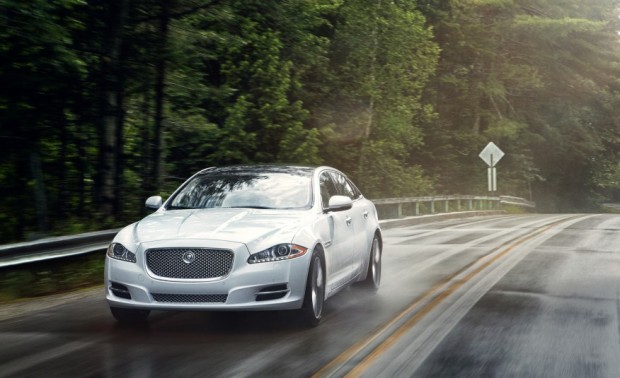
Jaguar XJ (2014 sales: 4329)
Full-size luxury sedans seem to be suffering a pandemic of weird design. The Audi A8 has a nose like an industrial air inlet, the BMW 7-series suffers from goiter, and the Lexus LS? Yeesh. That’s why we nod in approval whenever we see a Jaguar XJ roll by. The Jag’s athletic appearance talks the talk, while a lightweight aluminum structure and sporty but not punishing ride give it the walk. Upgrade to the long-wheelbase model for business-class rear accommodations in an airy sedan that hardly gives up any of the shorter variant’s hustle. Alternately, go all the way with the 550-horse XJR, whose nimbleness—especially in long-wheelbase format—seems to defy both physics and common sense. Jag’s sales volume can’t touch the German competition, perhaps in part because of semi-outdated perceptions of the brand’s quality, but maybe that’s a virtue in disguise: In a line of “bought it with my branch-manager bonus” German luxobarges at the country club valet, the Jag stands out like a set of washboard abs in a room full of paunches. Plus, coming in more than $20,000 cheaper than a comparable Mercedes-Benz S-Class, you could even call the sinewy Jag a bargain.

Mazda 5 (2014 sales: 11,613)
Bigger-is-better is as much the driving force in the purchase of the American family car as it is the American family home. That seems particularly true for those in the midst of child raising, which means the notion of a smaller-than-standard minivan was always going to be a tough sell. But the Mazda 5 selling at 10 percent of the volume of the Dodge Grand Caravan? The Mazda 5 isn’t that much smaller. After all, plenty of minivans are sold to people with only two kids, the extra seats designated for additional members of the kiddie carpool. So what does it matter if the Mazda 5’s third-row chairs are cramped? These are other people’s kids we’re talking about. Meanwhile, the Mazda’s tidy dimensions make it far easier to park and maneuver for those cool parents who haven’t abandoned the city for a four-bedroom colonial in the exurbs. The Mazda 5 is also far more nimble and fun to drive than any of the regular-size vans—even if Mazda has dropped the available six-speed stick. At a starting price of $22,060, the Mazda 5 is also the most affordable minivan out there, although not by a lot. On a dollars-per-pound basis, the Euro-size Mazda is never going to compete. But for those who can get beyond that warehouse-club thinking, the Mazda 5 is an excellent way to get six seats without going full suburban-paunch.

Mazda 6 (2014 sales: 53,224)
Previous versions of the Mazda 6 sedan might have deserved their anonymity, their place as wallflowers at the mid-size-sedan dance. But the current Mazda 6 does not. Designed and engineered by the same talented crew that brought us the excellent Mazda 3 and the transcendent new Miata, the Mazda 6 beat out all comers in our comparison—including the vaunted Honda Accord—to take the crown as our favorite mid-size sedan. It did so by excelling in categories both objective and subjective. With its 184-hp engine, it sprints to 60 mph in a brisk 7 seconds flat, yet returns 37 mpg on the highway according to the Feds. Subjectively, we love responsiveness of the chassis, the interior materials that feel a class above, and the way the body’s sculpting and proportions disguise the 6’s front-wheel-drive layout and instead impart the upscale elegance of a rear-wheel-drive car. Yet in an auto market where it seems that legions of customers unthinkingly buy or lease the same model they did before, the Mazda 6 is having a hard time breaking in. Its 53,224 sales in 2014 were dwarfed by the Toyota Camry’s 428,606. We’d say it’s underrated if it weren’t so highly rated—really, it’s just underappreciated.

Mercedes-Benz E-class wagon (2014 sales: 2327)
The 1980s weren’t kind to the domestic station wagon. Already under assault from minivans, the wagon was nearly eradicated when the same taste-making consumers responsible for elevating neon spandex and bi-level hairstyles to the pinnacle of fashion aligned themselves with the emerging SUV lifestyle, relegating the once-ubiquitous station wagon to duty as the dorksville express. Although a handful of manufacturers persevered through those dark and confusing days, it’s the current Mercedes Benz E-class wagon that displays the most faithful modern interpretation of a given maker’s original longroof philosophy. As with its forebears, the differences from its sedan counterpart are contained primarily in the aft portion, and it’s of our opinion that the classic, understated lines of the Mercedes Benz E-class are better suited to the wagon format right from the start; the additional cargo capacity and a third-row seat, cramped as it may be, are just welcome rewards for selecting the more handsome body style. Considering that the $59,925 base MSRP of the 2015 E350 4MATIC wagon in sport or luxury trim is just $4200 more than that of a comparable 2015 E350 4MATIC sedan, it’s beyond us why the wagon accounted for only 3.5% of E-class sales in 2014. To put a finer point on it, of the 66,400 E-class variants Mercedes dealers managed to peddle to a new generation of tastemakers, only 2327 were of the wagon variety. We’re all for ’80s nostalgia, but this is one trend we’d like to see reversed.
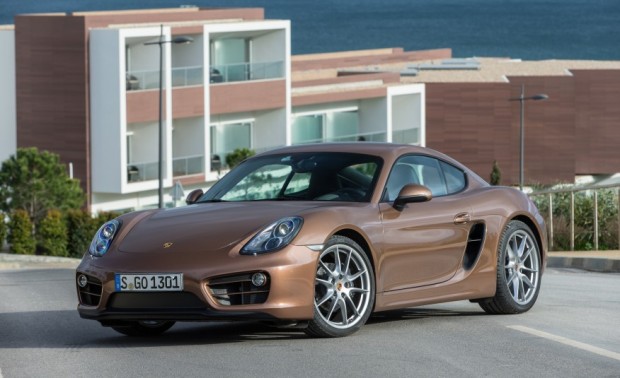
Porsche Cayman (2014 sales: 3417)
While the Porsche Cayman continues to hold us in its thrall—it’s been on our 10Best Cars list eight times—the 911 is the Porsche sports car that holds sway with buyers. In fact, while the first-generation Cayman burst out of the gate at a sprint, with 7025 sold in 2006 and 6027 in 2007, sales haven’t cracked 3500 in any other year. The 911? Porsche moved more than 10,000 in each of the past two years. And that’s a shame, because the Cayman is the better car to drive, distilling and delivering the Porsche magic with few superfluous frills. The secret is its mid-engined chassis, which imparts hyper-sharp reflexes and a natural at-the-limit stability that requires electronics on the rear-engined 911. From its sublime steering to its wonderful transmissions, and from its gorgeous styling to its rigid structure—40 percent torsionally stiffer than the hyper-rigid Boxster convertible—the Cayman is one of the very best cars on the planet.
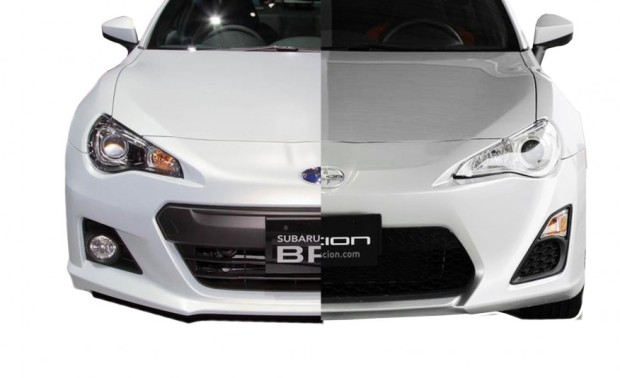
Scion FRS / Subaru-BRZ (2014 sales: 14,062 and 7504, respectively)
Judged as a corporate entity, neither Subaru nor Toyota is in danger of drowning in red ink. But underneath those blue-chip financials lays a no-so-secret secret: The Scion FR-S/Subaru BRZ twins aren’t exactly burning up the sales charts. They were touted by the automotive media as a triumphant return to the small, light, and affordable sports car formula of yore, and enthusiasts couldn’t wait to open their wallets for an FR-S or BRZ to call their own when the cars went on sale. But as we reported earlier, a quick look at the sales numbers reveals that after the initial burst of buyers signed the contract, sales slumped. Despite being on sale for only the last six months of 2012, Scion moved 11,417 FR-S models; in 2013, the first full calendar year of sales, 18,327 buyers found a home. But in 2014, the number fell to 14,062 units, a development our financial adviser would refer to as “trending downward.” For the first three months of 2015, Scion chalked up sales of 2445 units, well off the pace for the same period last year when 3425 FR-S models found happy—we hope—owners. Over at Subaru the story is largely the same, but the overall numbers are lower: 4144 units sold in 2012, 8087 in 2013, and 7504 in 2014. In the first three month of 2105 Subie sold 1159 BRZs, compared to 2066 in the same period last year. Is the declining interest due to the sonically challenged 2.0-liter flat four being a bit rough around the edges? Could be. Could the suspension offer a better blend of damping and road holding for daily drivers? Maybe. But for those of us who value timeless driving dynamics like steering feel, a playful confidence-inspiring chassis, and braking action so natural it feels hardwired to the brain, the FR-S/BRZ twins are like money in the bank.
Editors Note:
Armed with this information about how good these vehicles really are don’t forget to give these cars a serious consideration when importing your next vehicle from the United States.The Mazda 6 is highly recommended due to its equipment levels and the impressive fuel efficiency ratings of the skyactiv engines–capable of 37mpg on the highway.
Source:http://www.caranddriver.com/flipbook/the-10-best-cars-that-nobody-buys
 The front view of the 2018 Range Rover Velar
The front view of the 2018 Range Rover Velar
New Range Rover models don’t come along that often but it appears Range Rover lovers have been fortunate in recent times.I say this because somewhere in 2005, the Range Rover Sport was introduced as the younger sibling to the Range Rover, proper.The Range Rover Sport was also joined by its smaller sibling, the Evoque in 2011.And with the official launch of the Range Rover Velar on March 1st 2017;with a grand unveiling at the London Design museum, the Range Rover family has grown to four.The Velar is expected to sit between the Evoque and the Sport; both in size and price.In the UK, the starting price of the Velar is estimated at £45,000.The MSRP in the US is expected to be from $50,000, which would make the Velar about $15,000 cheaper as compared to the starting MSRP of the Range Rover Sport which is $64,950. With that said, enjoy the following fun facts about the all new 2018 Range Rover Velar .
My name is Range Rover Velar.
The name Velar, was derived from the Italian word ‘velare,’ meaning to veil or cover. According to Jaguar Land Rover, in order to keep the prototype for the first-ever Range Rover a closely guarded secret, the designers and engineers behind this revolutionary new vehicle gave the top-secret prototype the name ‘Velar’ and even fitted the first 26 prototypes with a badge of the same name to disguise its identity.
 One of the prototypes of the 1st generation Range Rover with the Velar name-plate
One of the prototypes of the 1st generation Range Rover with the Velar name-plate
Design, engineering and production.
The Velar was designed, engineered and made by over 15,000 people.According to the Design Director at Range Rover, Mr McGovern, the car’s design was influenced heavily by women.Amy Frascella the Creative Director, Interiors, was responsible for the interior design of the Velar and Massimo Frascella, the Creative Director, Exteriors did the outside work.Please note that Amy and Massimo are married, so assuming that the Velar fails to meet your expectation you can take solace in the fact that, love was at the centre of the design.Now, take that for the policy that forbids spouses from working together.
 well-crafted interior of the Velar
well-crafted interior of the Velar
For extra panache, Range Rover partnered with high-end Danish textile company Kvadrat to offer a premium material alternative to leather. The thinking being that the new cloths will be attractive, just as durable, but less damaging to environment than traditional leather.
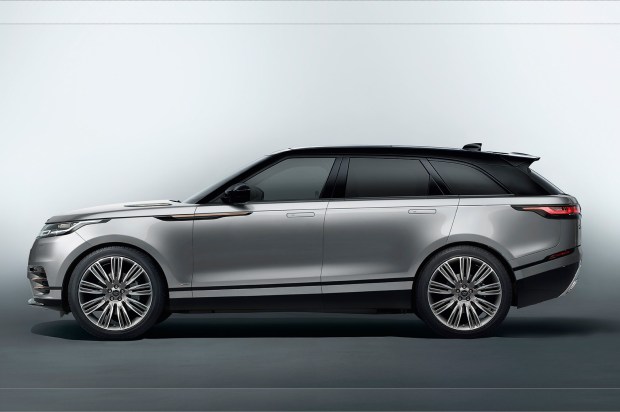 The side profile of the Velar
The side profile of the Velar
 Rear view of the Range Rover Velar
Rear view of the Range Rover Velar
3. Engine Options.
There will be five engine options for the Velar, all of which will be paired with an 8-speed ZF automatic transmission. However, only 3 engines will go to the US market:the range-topping powertrain, a 3.0-litre supercharged V6 petrol engine producing 380bhp can get the 2.55 tonne luxury SUV from 0-60mph in just 5.3 seconds and on to a top speed of 155mph, a 247-hp 2.0-liter inline-four, and a more frugal engine option in the 2.0 litre four-cylinder 16v 180hp diesel which will accelerate from 0-60mph on 8.4 seconds on to a top speed of 130mph.The diesel power-train will suit individuals who can’t resist the beauty and charm of the Velar but are not too keen on power .
More tech than you can handle!
The 2018 Range Rover Velar is so technologically advanced that it needed nearly 10km of electrical cabling to cater for all the gadgetry in the car.Some of these new tech include the deployable door handles that contribute to the aerodynamic form factor of the Velar. These handles extend outwards powered by motors that are powerful enough to punch through ice, so even in the worst conditions, the system will remain operable.For audiophiles, there is a choice of four audio systems – the top-end being the 1,600W Meridian Signature Sound System with 23 speakers.
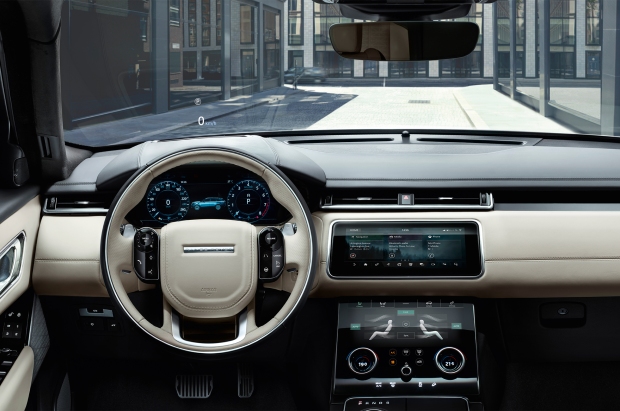 The all new Touch Pro Duo system with dual HD touch screens
The all new Touch Pro Duo system with dual HD touch screens
Another major tech in the Velar is the all new Touch Pro Duo system, which is a new driver interface for Range Rover and consists of two HD touchscreens on top of each other. The upper screen is for infotainment while the lower is reconfigurable depending on your activity, and includes two rotary switches that alter function depending on what is being displayed.
Let me conclude by giving Jaguar Land Rover their props for coming to the market with a Range Rover that more people can actually dream of buying thanks to the wonderful entry level price of roughly US$50,000.
Resources:
helping relationships and marriages grow